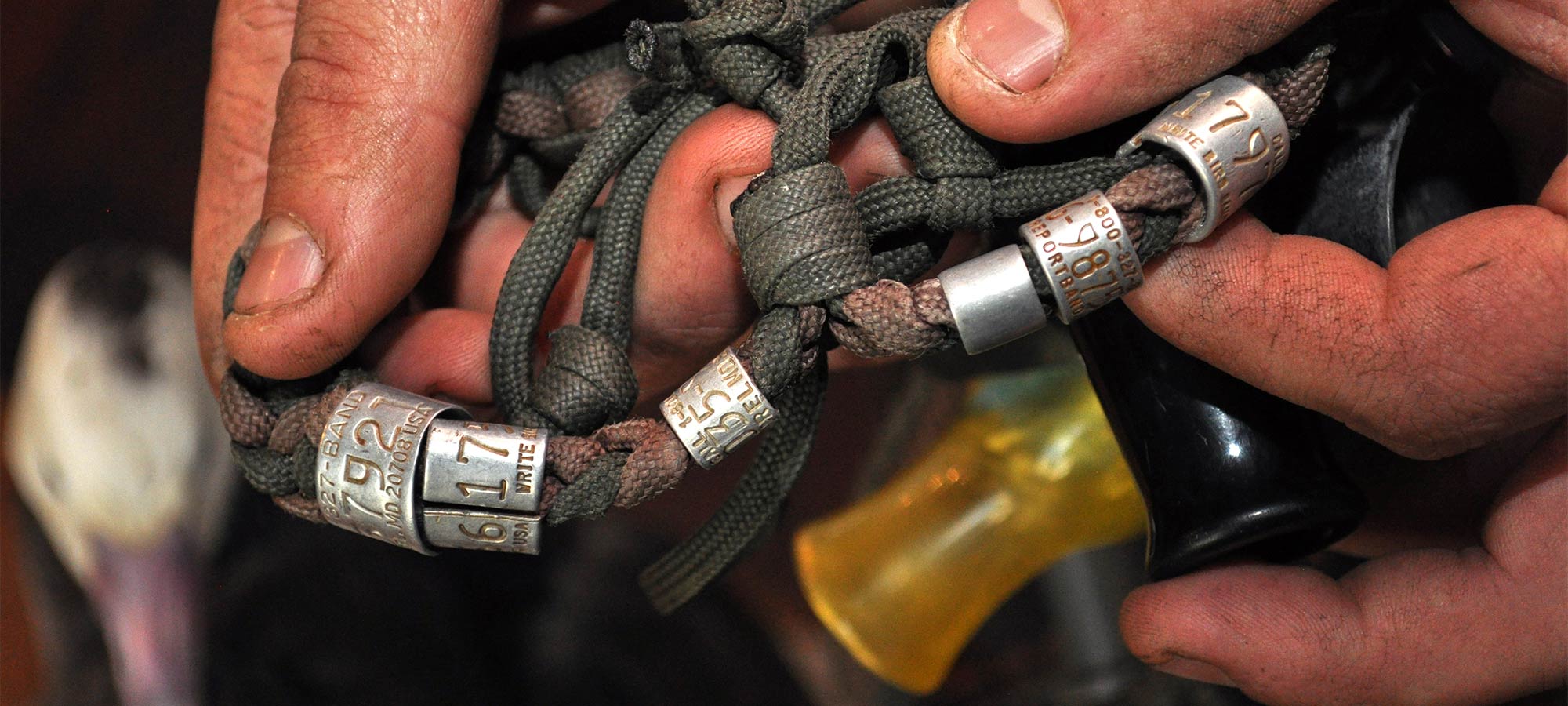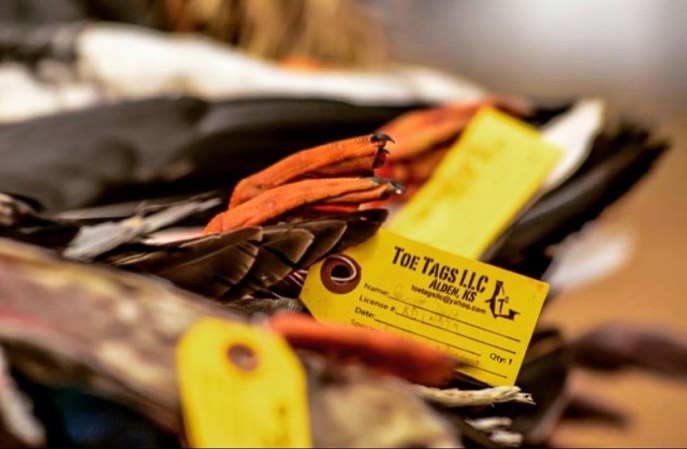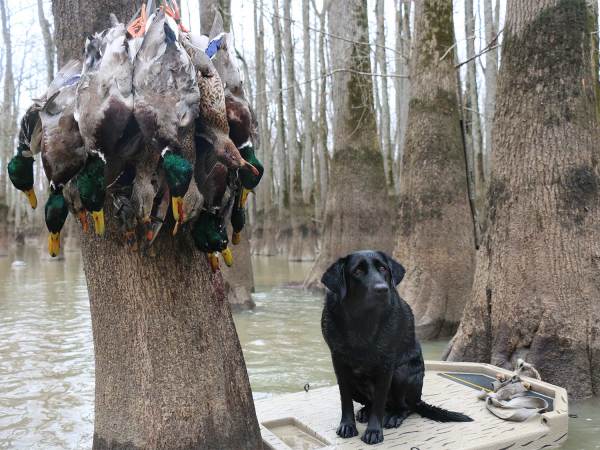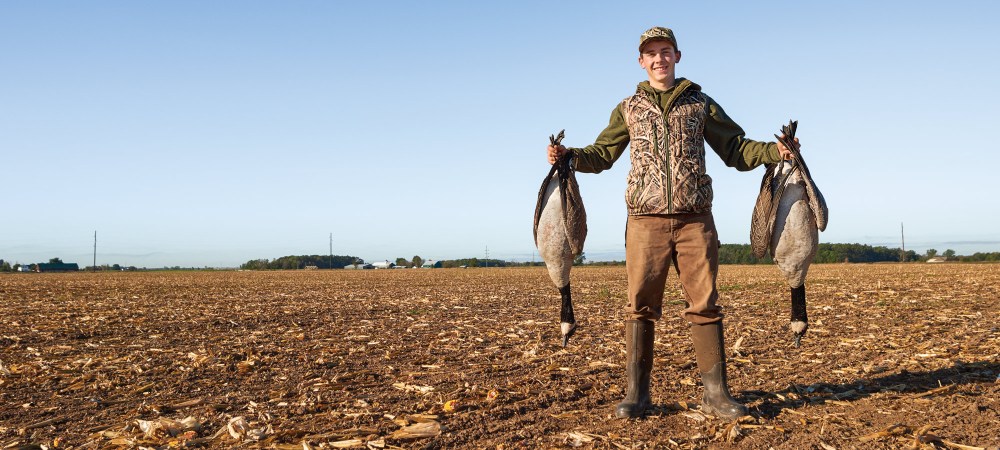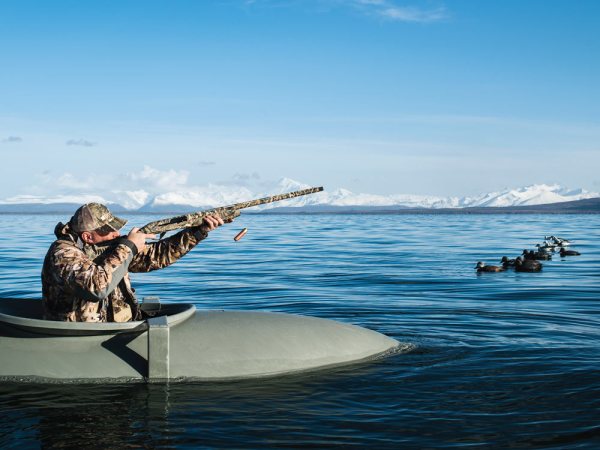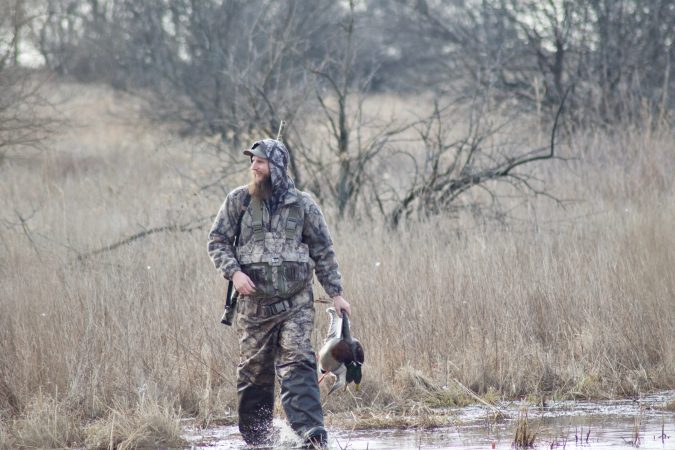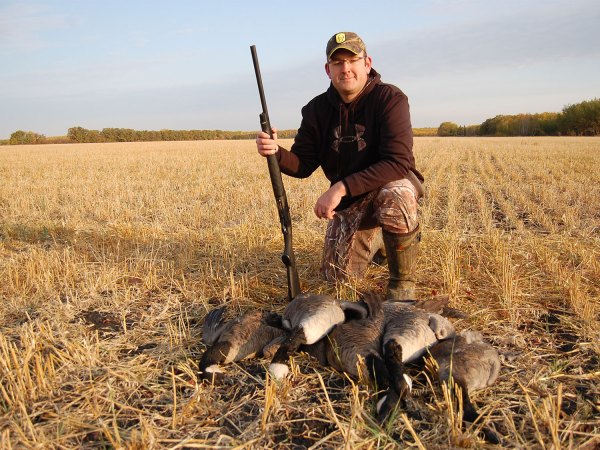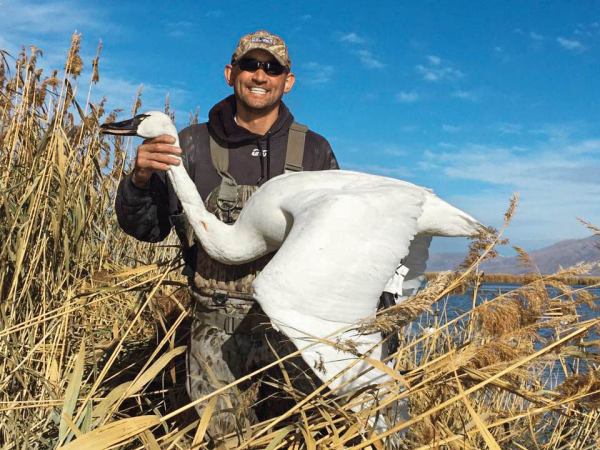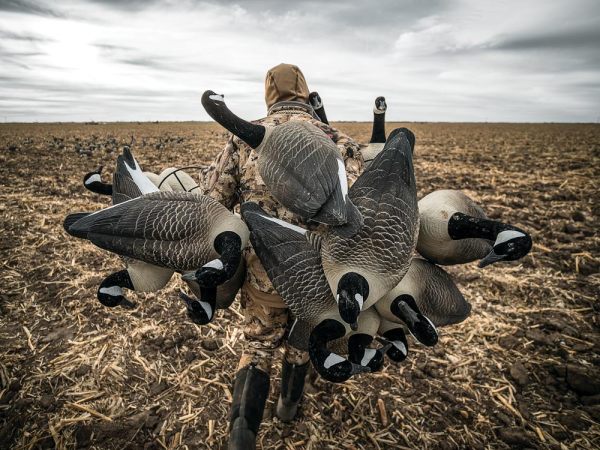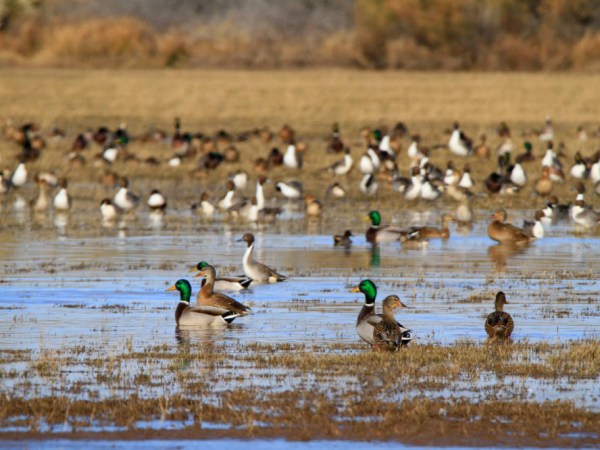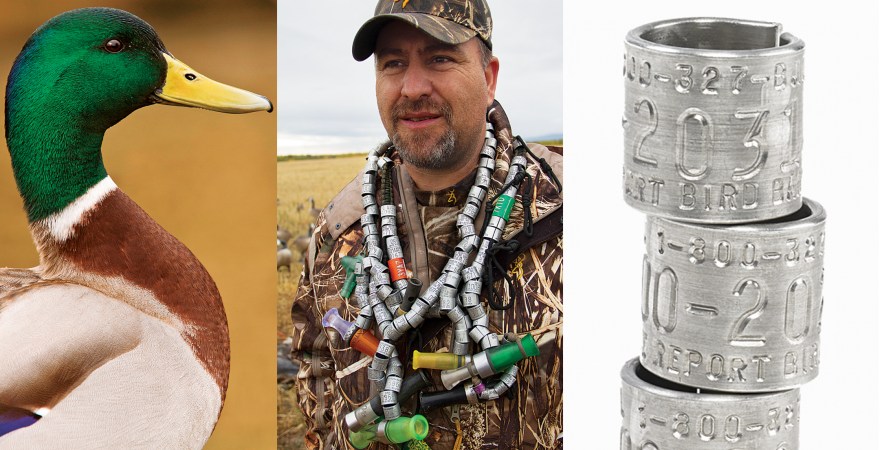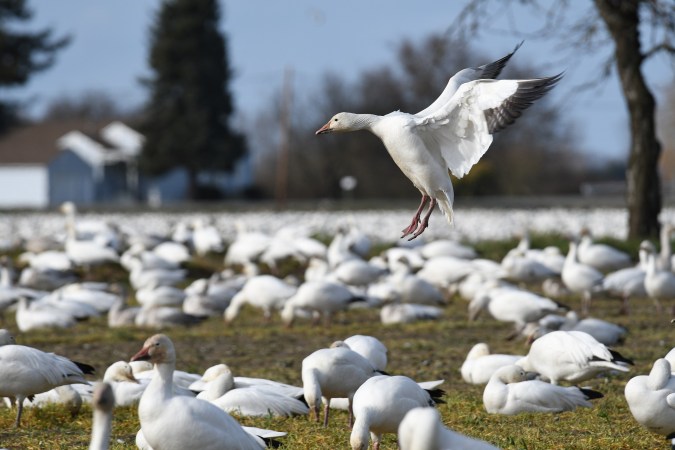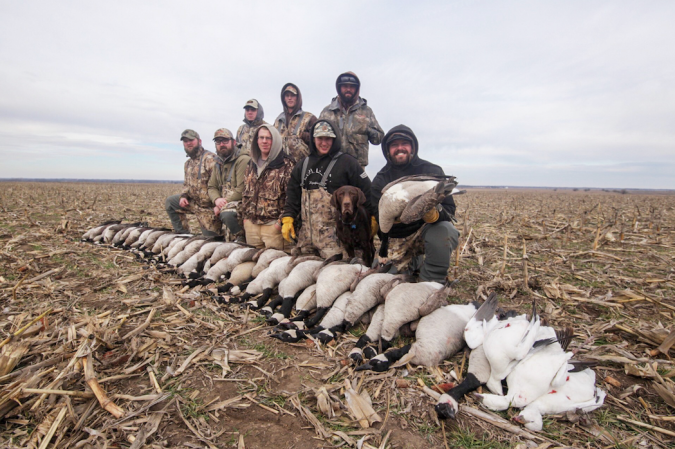There are few things as exciting to waterfowlers as harvesting a banded bird. Shooting a banded bird a rare occurrence, and provides an everlasting memento of that hunt, which makes a great conversation piece when you’re having a pint of beer with your fellow hunters in the offseason.

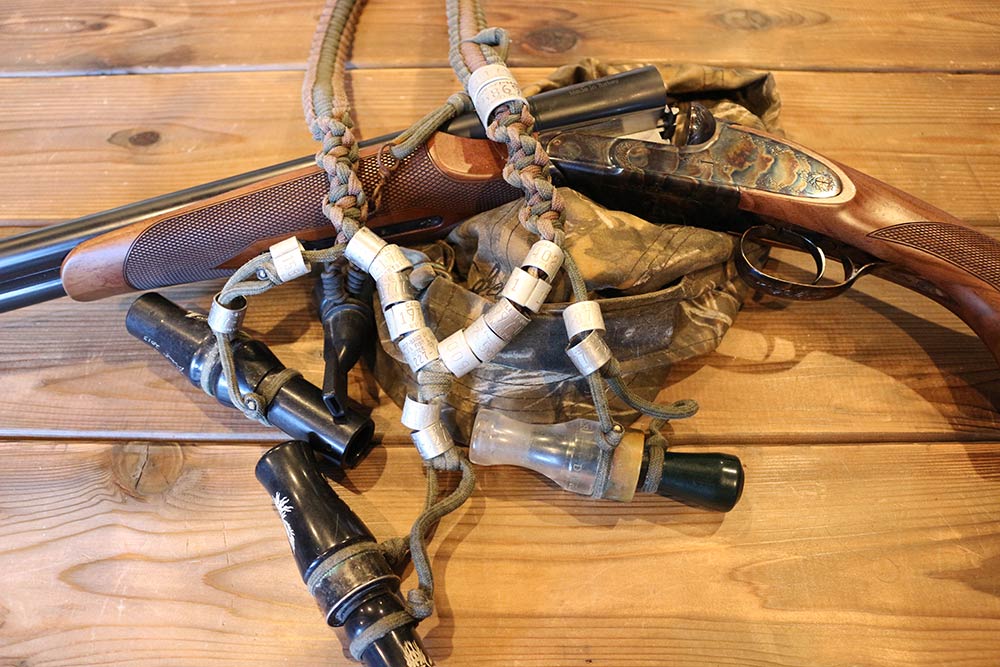
But bands are more than just keepsakes. Bands help deliver invaluable information to managers to help them set seasons and bag limits so sportsmen and women have ample hunting opportunities without adversely affecting duck populations. Working as a wildlife technician in my younger years, I personally banded thousands of sea birds and countless waterfowl, and in turn, I learned a few unique tidbits over the years. Here are 10 facts about bird bands that you probably don’t know.
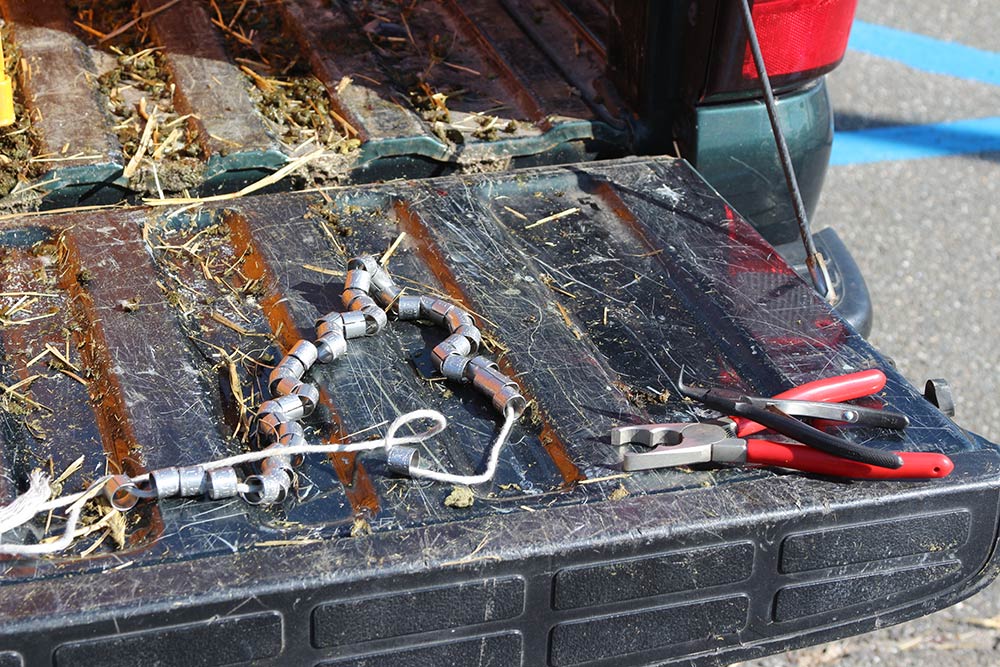
10. The First Bands of Record
The process of banding, or “ringing” as it’s known in places other than the United States, dates back to 218 B.C. Historical records indicate Roman officers in the Punic Wars tied threads around the legs of birds that acted as messages to fellow soldiers. European royalty used the practice to indicate ownership of falcons. In 1595, a ringed peregrine that escaped King Henry IV’s home in France was spotted some 1,350 miles away in Malta just 24 hours later.
Duke Ferdinand placed a silver band around the leg of a grey heron in 1669 in an attempt to determine where it would travel. In 1728, the Duke’s grandson found the banded bird. Though centuries have passed, the practice remains much the same today, though record keeping and capture methods have come a long way.
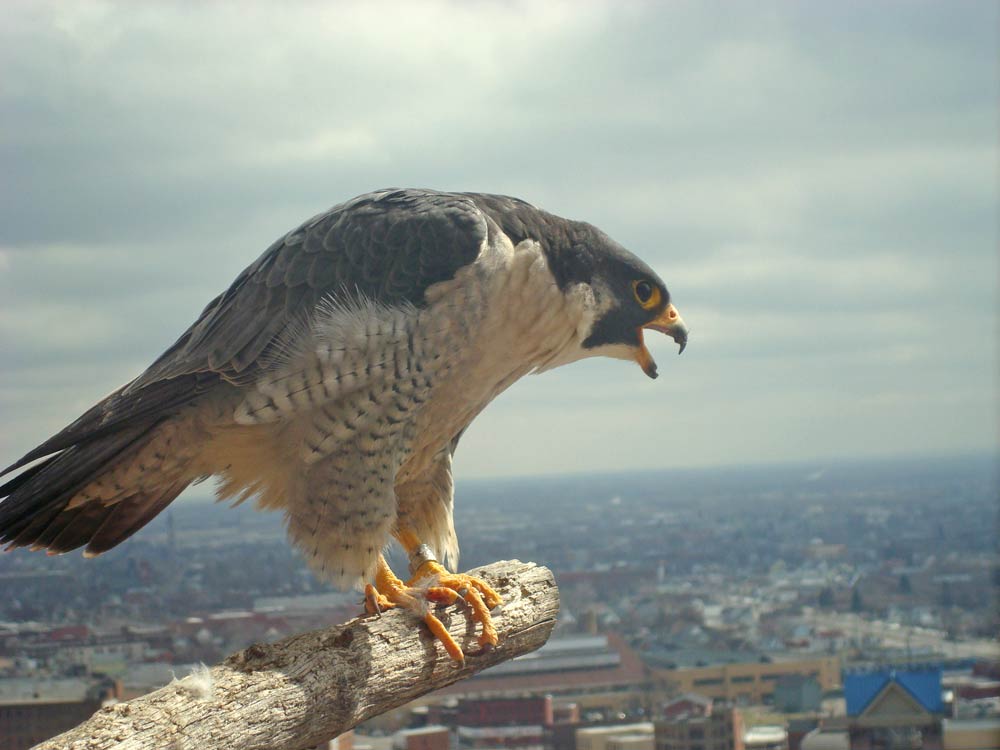
9. Bands Aren’t Just for Waterfowl
In America, a division of the United States Geologic Service called the Bird Banding Laboratory (BBL) is responsible for keeping track of all the birds marked by biologists. Since 1960, the BBL has received some 64 million banding records. Of those, ducks, geese, and swans comprise only 19,962,482 (or 31 percent). Nearly every genus from songbirds to shore birds and loons to bald eagles has worn a metal bracelet in the name of science.
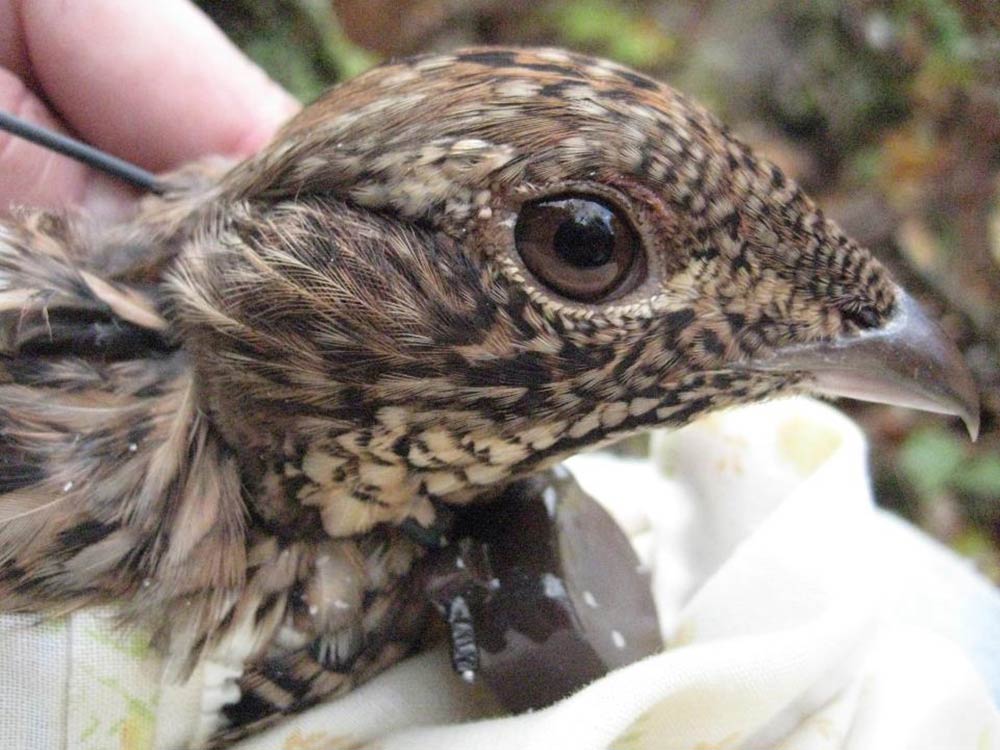
The BBL records do not include grouse, quail, turkey, or pheasants information. Because upland birds are considered non-migratory, or short-distance travelers at best, they are not covered by the Migratory Bird Treaty Act and therefore don’t fall under the purview of the BBL. Upland bird records are typically kept by a state fish and game agency, or whatever entity is conducting the research, like a university or conservation organization.
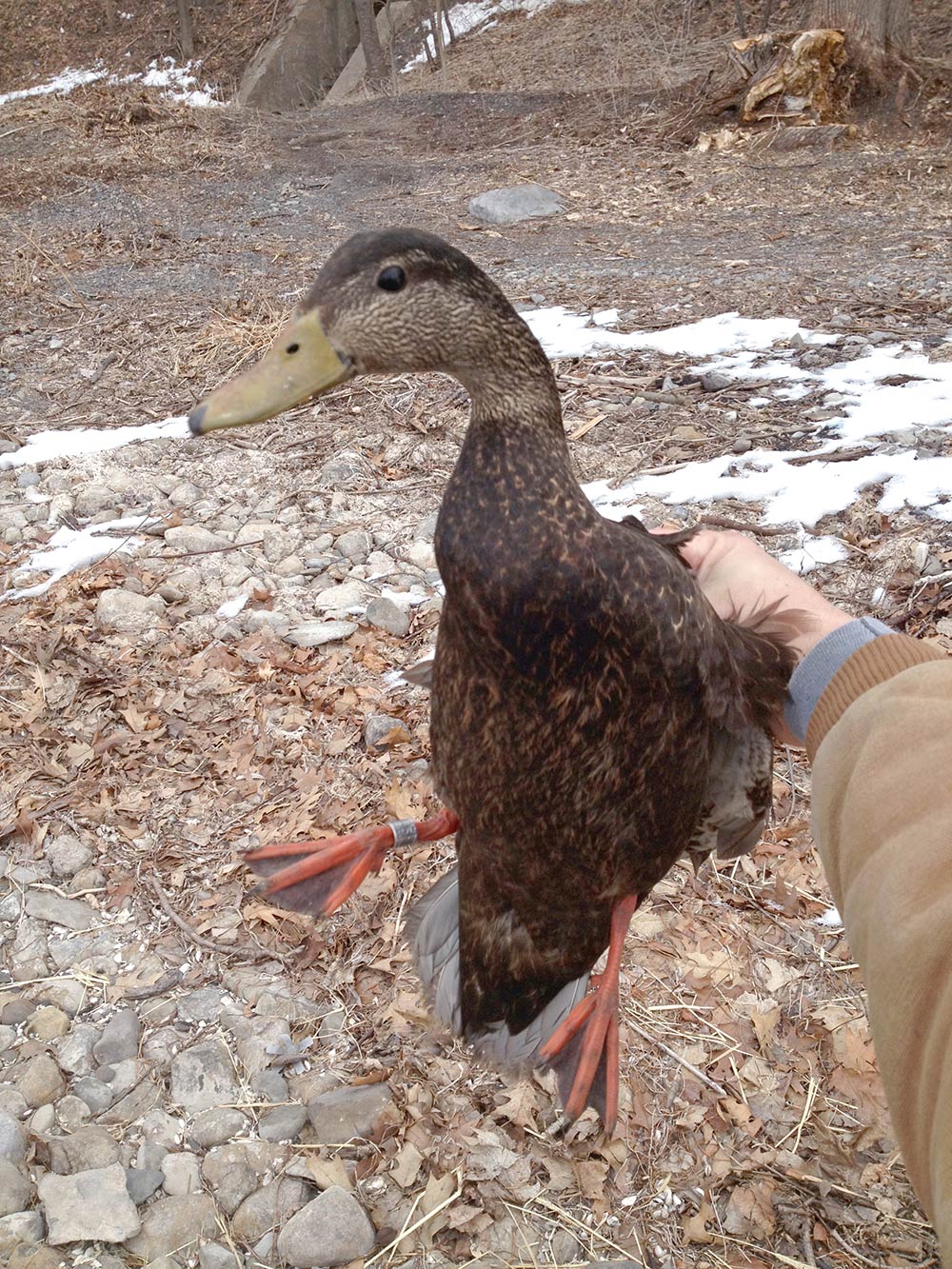
8. Bands Reveal a Bird’s Lifespan
Unlike deer, which anyone can age by gauging the wear-and-tear on the animal’s teeth, or fish, where you can count the growth rings on their inner ear (otoliths), there are few clues to help age a bird. Luckily, banding records have helped estimate the average lifespan of some of our feathered friends. Here are the some of the oldest waterfowl ages on record:
- Mallard: 26 years, 4 months
- Wood duck: 22 years, 6 months
- Black duck: 26 years, 5 months
- Canvasback: 29 years, 6 months
- Lesser snow goose: 27 years, 6 months
- Canada goose: 33 years, 3 months
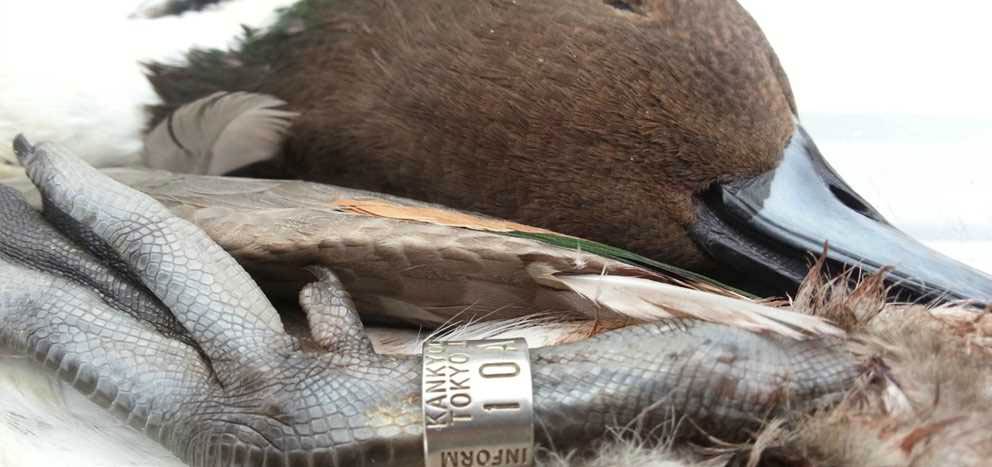
7. Banded Birds are Everybody’s Birds
Part of what makes ducks and other birds so cool is their ability to migrate or cover vast distances in unbelievably short periods of time. Because of this, cooperation between fish and wildlife agencies around the globe is important for collecting accurate, reliable data.
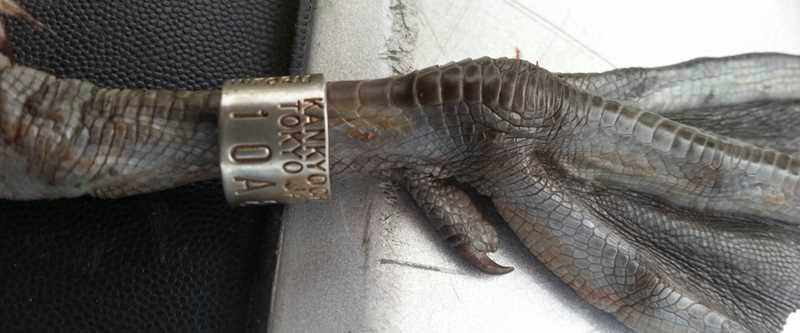
The U.S. Fish & Wildlife Service has always worked closely with the Canadian Wildlife Service, but birds can travel even farther, as was the case with a pintail shot in California by Eric Heidman. The bird was at least 14 years old, and had covered more than 5,000 air miles on its journey from Saitama Duck Refuge in Obayashi, Japan, to where it was harvested in a California rice field. Perhaps even more remarkable, it was the sixteenth banded pintail on record to complete the fantastic voyage since 1977.
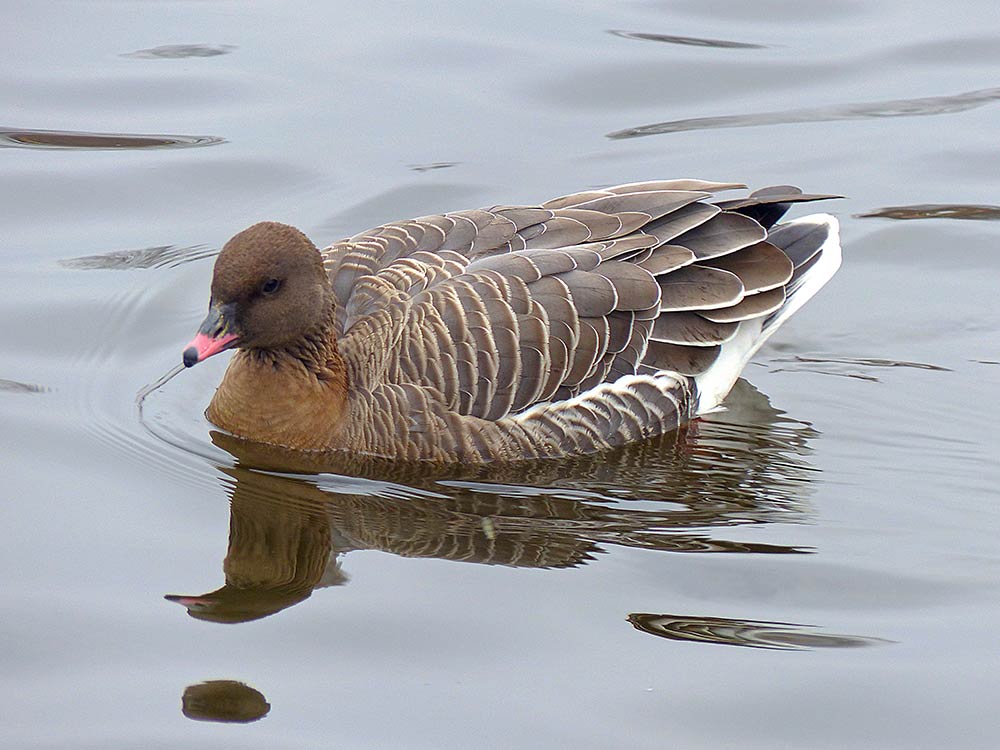
The intercontinental journey isn’t just a phenomenon unique to the West Coast, as ducks and geese banded in Iceland and Greenland will also occasionally turn up on New York’s Long Island as well.
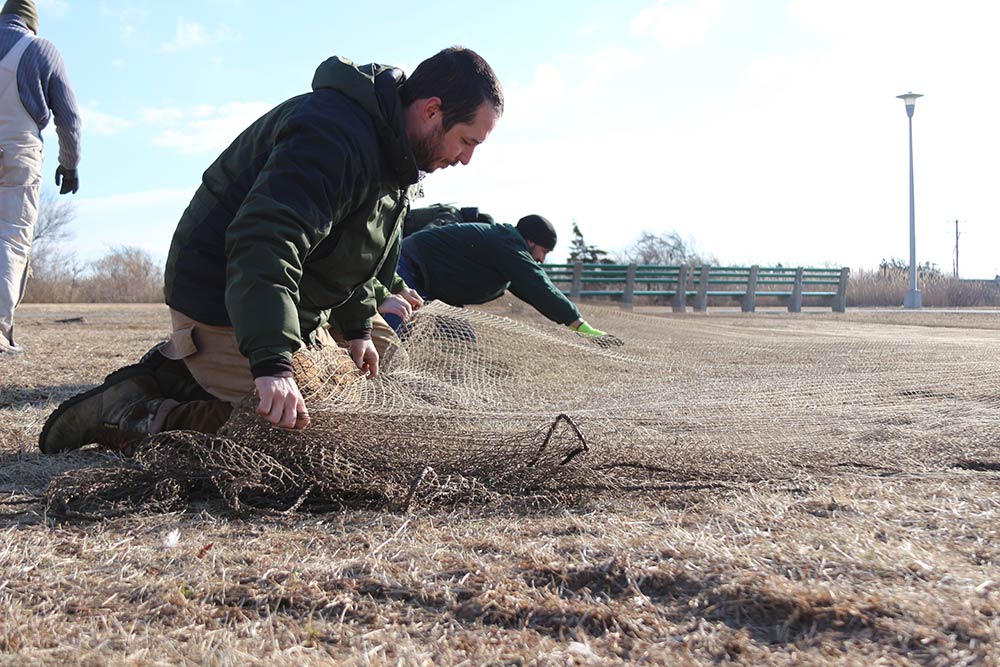
6. Banding Birds isn’t Easy
Waterfowl are a relatively diverse group of birds, so a one-size-fits-all approach to capturing birds simply doesn’t work. The environments each species frequents are simply too different. Thankfully, managers have created various capture techniques that range from simple and pragmatic to schemes that Wile E. Coyote would be proud to implement.
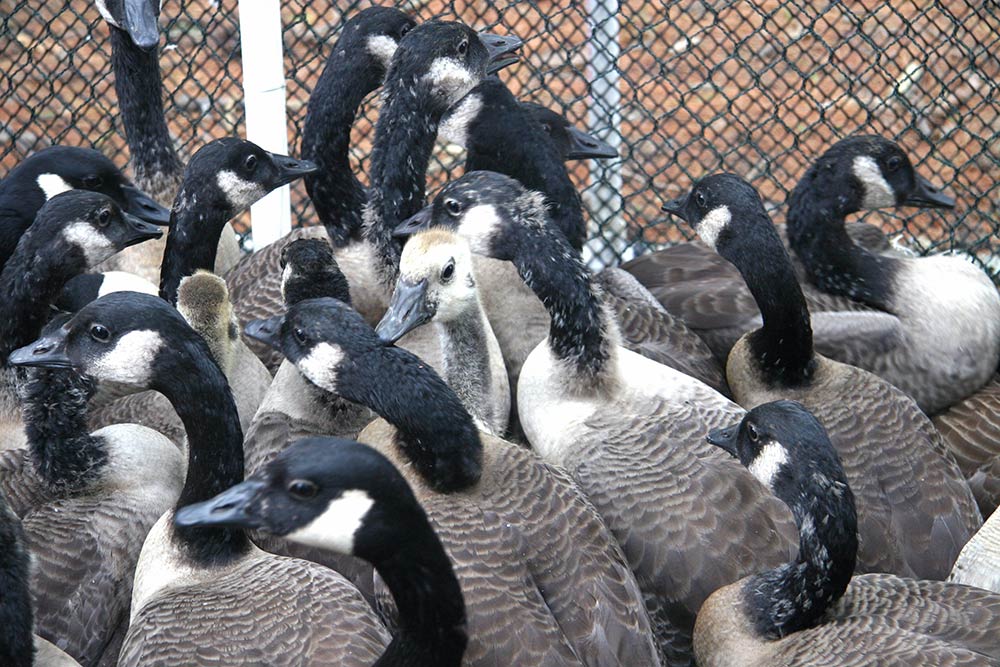
Geese are most commonly banded during the molting phase—a 30- to 45-day period when the birds are flightless as they regrow feathers. At that time, the grounded birds are gently pushed into makeshift pens constructed out of PVC fencing. Handlers record the bird’s vital information before fitting each with a metal band.
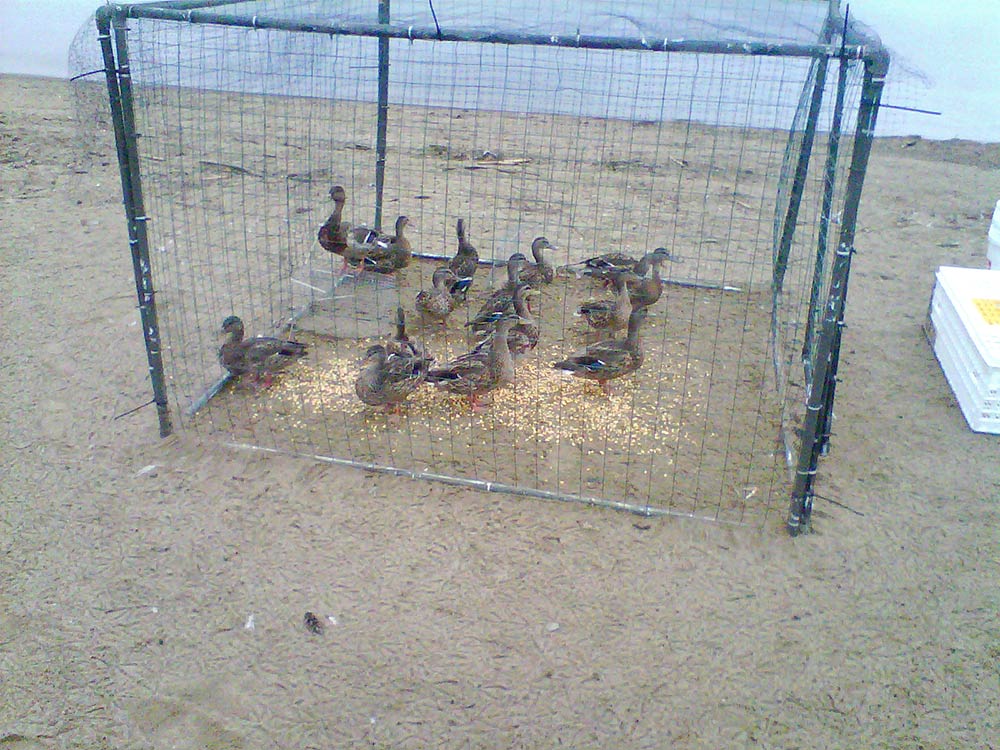
Puddle ducks are typically captured with walk-in traps. These enclosures are built from poultry mesh wrapped around PVC pipes or metal fence posts with a funnel-like opening on one or more ends, and then placed on land or in shallow water. Dive-in traps are similar, but are placed in water at least three feet deep to capture diving ducks like mergansers or scaup. Instead of a funnel opening, the netting starts about a foot off the lake bottom, and provides just enough room for a diver to sneak in from the outside, but is enough of a deterrent for them not to leave.
Bait, typically cracked corn, draws the first few ducks in. Then the flocking instincts kick in and the allure of live decoys takes over. After ducks are removed and banded, one or more may be returned to the trap to lure others in.
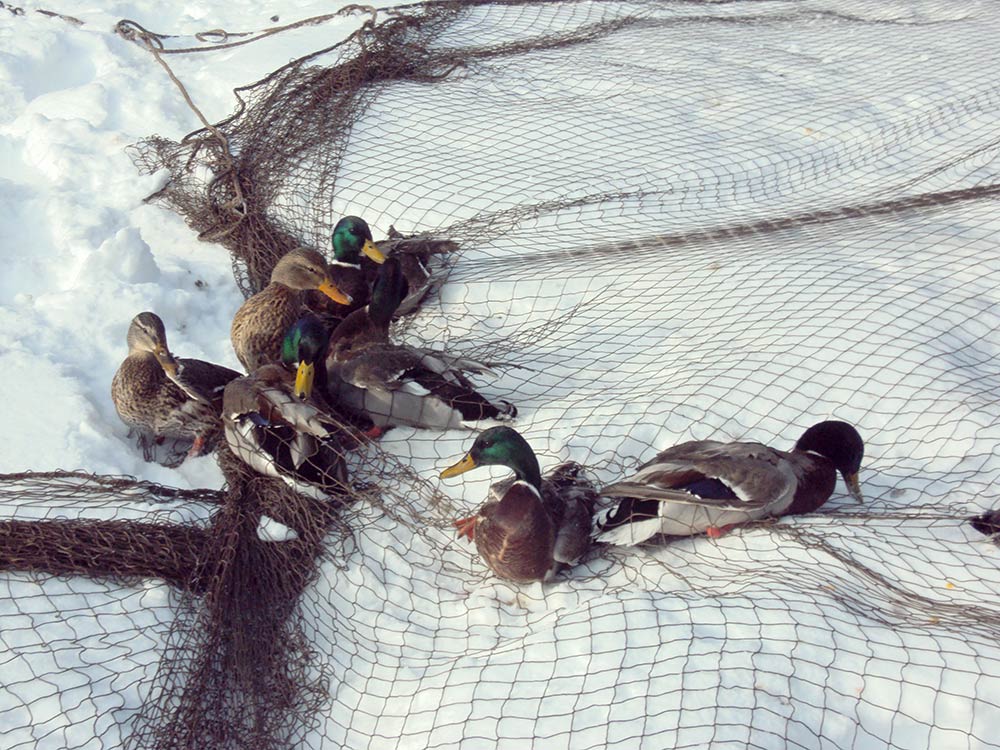
To capture large numbers of ducks or geese, it’s hard to beat a rocket net. This device consists of a large net propelled by explosive charges. The “rockets” are hollow iron or steel tubes in which a combination of black powder and other chemicals called “howitzer mix” is contained. Once a flock is safely positioned in front of the net, the charges are fired remotely with an electronic detonator. Bait is typically used to lure the birds in, though decoys also help.
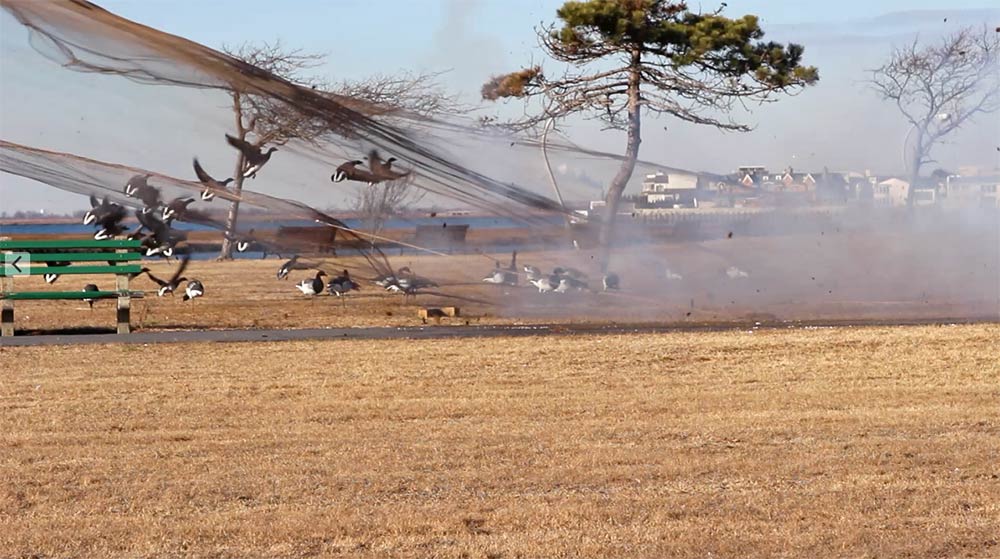
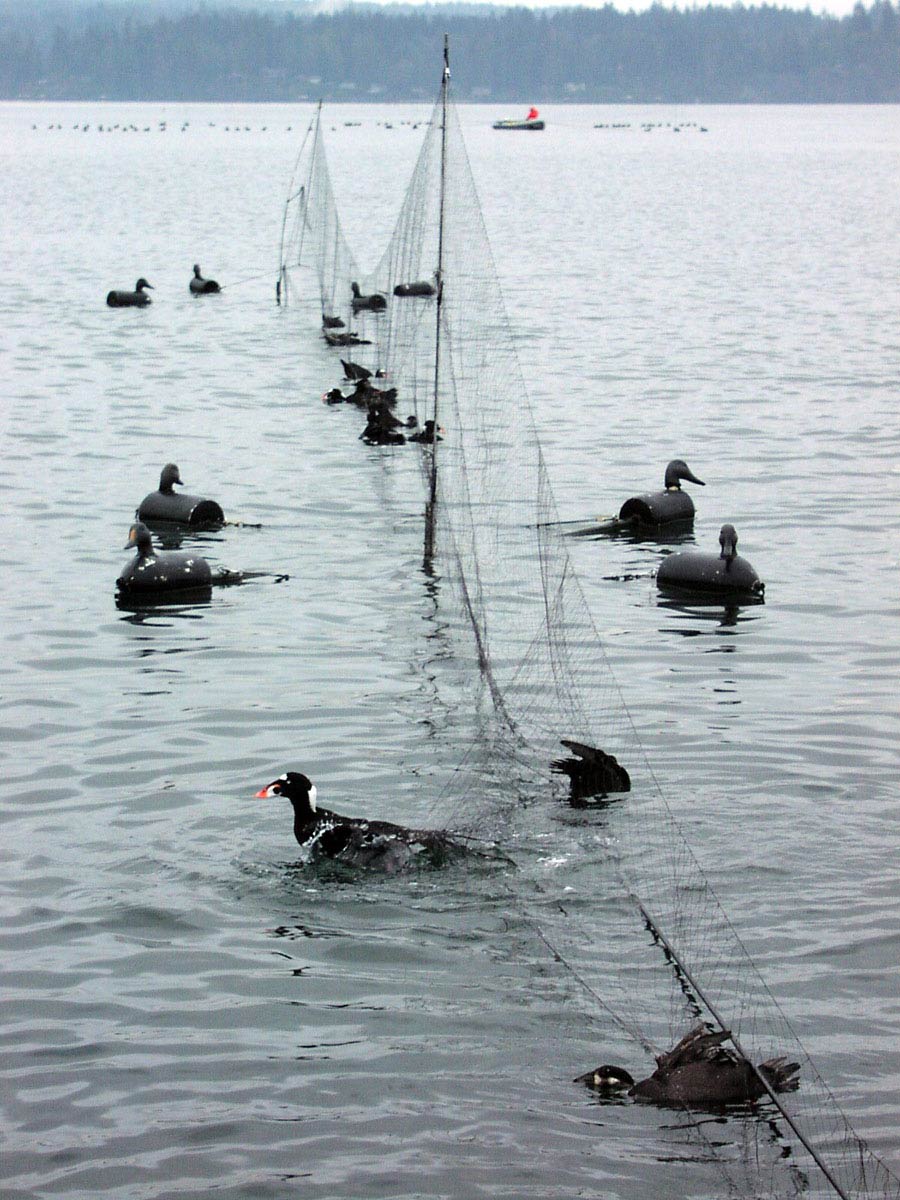
Mist nets resemble something you would see strung across a volleyball court, but with significantly more slack in the line. The loose netting is designed to protect the fragile, hollow bones of even the tiniest birds, and it absorbs the impact when they crash into the mesh. This technique is most often employed with song- and shorebirds, but enterprising seabird researchers have used mist nets on floats placed inside decoy spreads to capture scoters and other sea ducks on their wintering grounds.
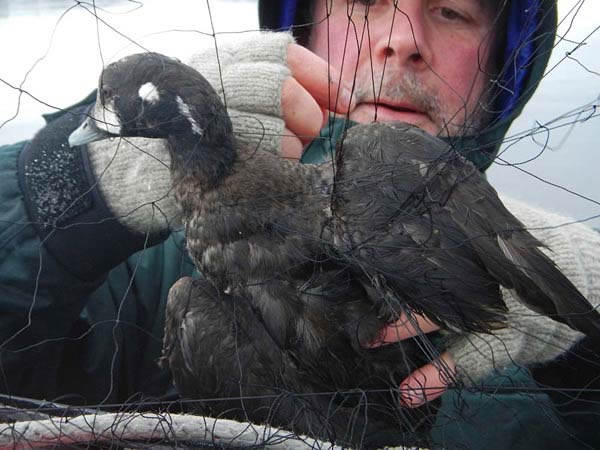
Night lighting is one more effective capture method. Banding crews set out across a wetland in a flotilla of jon boats, armed with bright spotlights and long-handled nets with the intent of disorienting roosting waterfowl. This tactic works best for capturing diving ducks, like scaup or the humble American coot, which roost in large rafts.
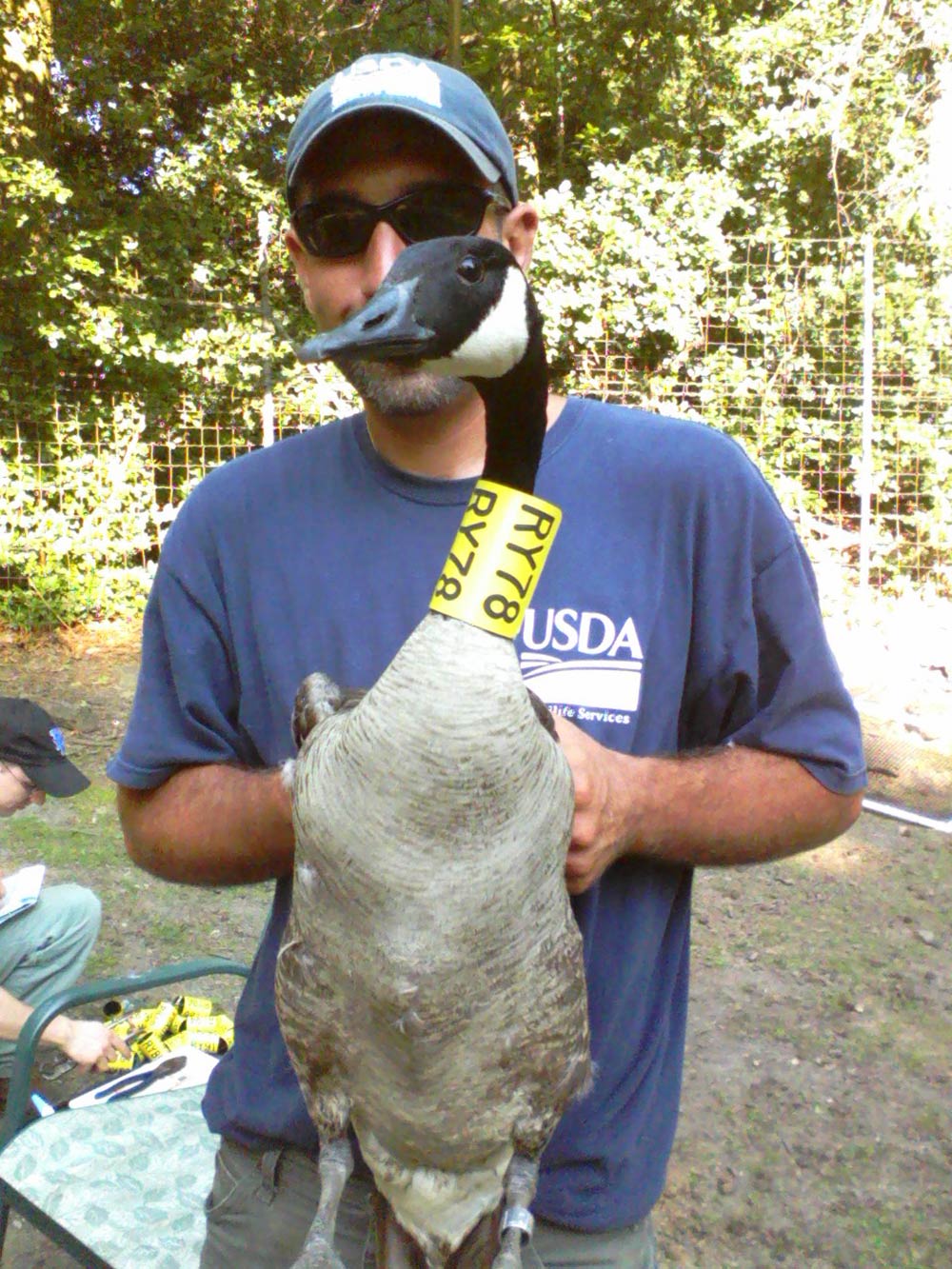
5. Bands Come in Many Shapes and Forms
You’ve been keeping an eye on a flock of geese with two neck-collared birds for weeks, but they never seem to leave town’s golf course. The biologist that fitted the honkers with the neckwear likely came to the same conclusion, and wants to prove his or her hunch correct.
When it comes to birds that likely spend their entire lives within city limits, where no-discharge laws protect them, researchers like to use highly visible markers around a bird’s neck because the odds of someone recovering a small metal band are slim. Neck bands have large numbers printed on a contrasting background and are easy to read from great distances using spotting scopes or binoculars. This allows biologists, bird watchers, and hunters alike to report sightings. Think of it as crowdsourcing science.
Neck collars really come into their own for biologists looking to separate distinct populations of the same species, as is often the case with Canada geese. The Atlantic population, which mostly nests in Hudson Bay, has declined for some time now, while resident goose numbers continue to skyrocket in other locales. Being able to positively identify each population allows biologists to analyze the size of each, their movement, and distribution, as well as estimate survival rates. Then managers can set seasons that take advantage of abundant populations while protecting sensitive ones.
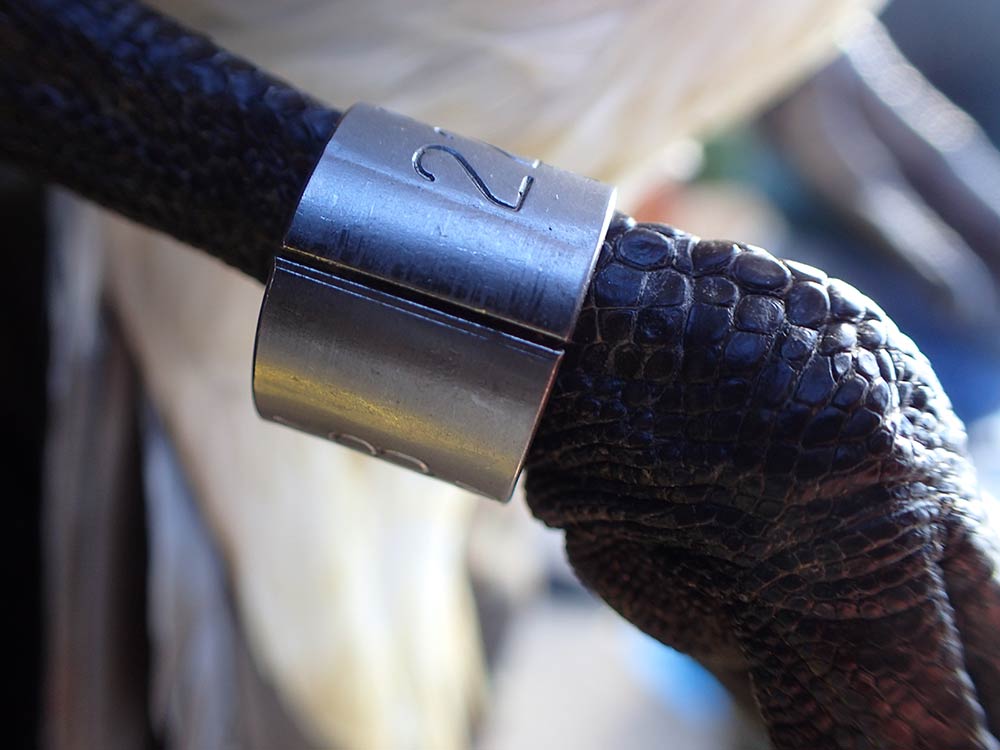
4. Not All Bands Are Metal
An aluminum leg band is by far the most common bird marker, but biologists also use a variety of other devices. Like neck collars, auxiliary markers make it easy to identify individual birds at a distance and can be attached in a variety of places on a bird, including a leg, foot, wing, or even a bill. All are used in conjunction with a metal federal band, with one exception.
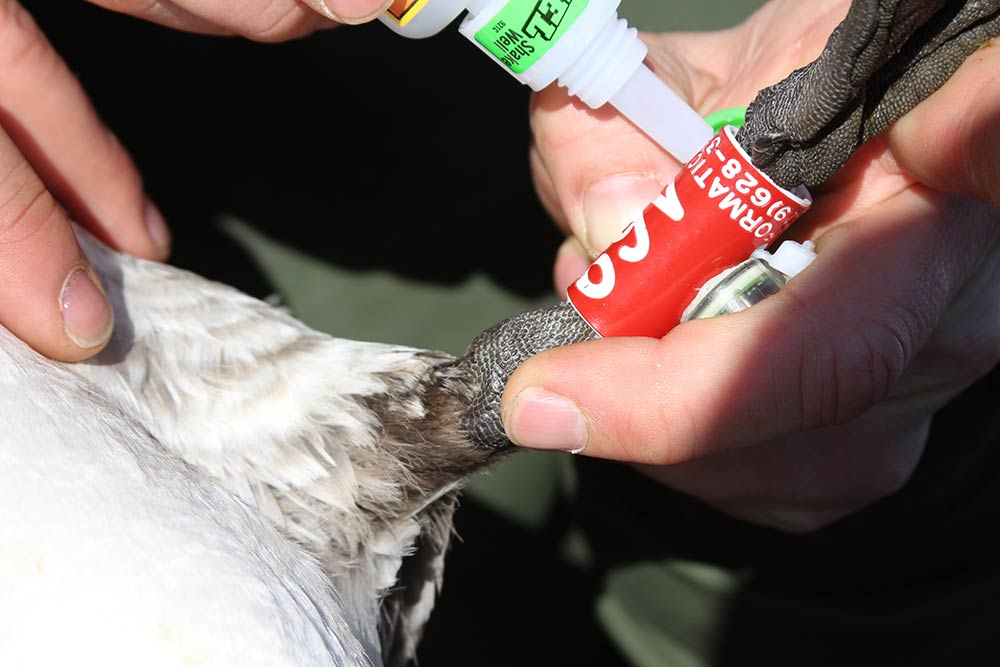
Tarsus bands are similar to leg bands, but are made of plastic and feature large, highly visible numbers. These bands have become more popular than neck collars in recent years, with some research suggesting neck collars can cause undue hardship, or even death, from ice collecting between the band and bird’s neck in cold months. However, tarsus bands are only useful on birds that leave the water, because sunlight must reach the device on their leg.
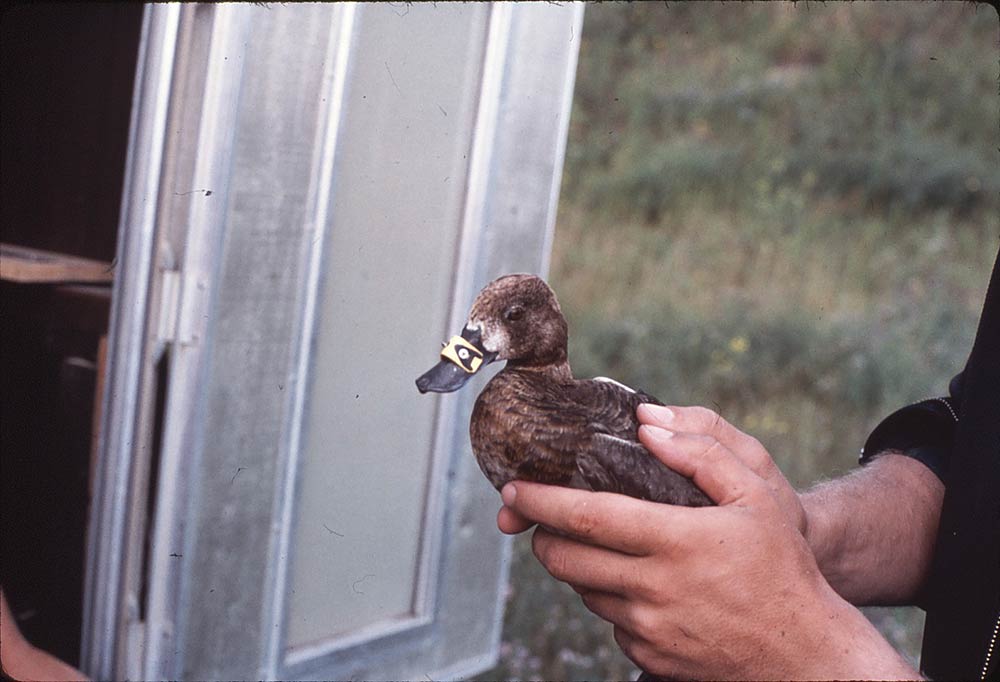
For diving ducks and other birds that rarely leave aquatic environs, nasal saddles work great for long-term studies. These brightly colored discs fit over a bird’s bill and are held in place by a rod slid through the nostrils. Like tarsus bands, these markers feature highly visible numbers that allow valuable data to be collected from a distance.
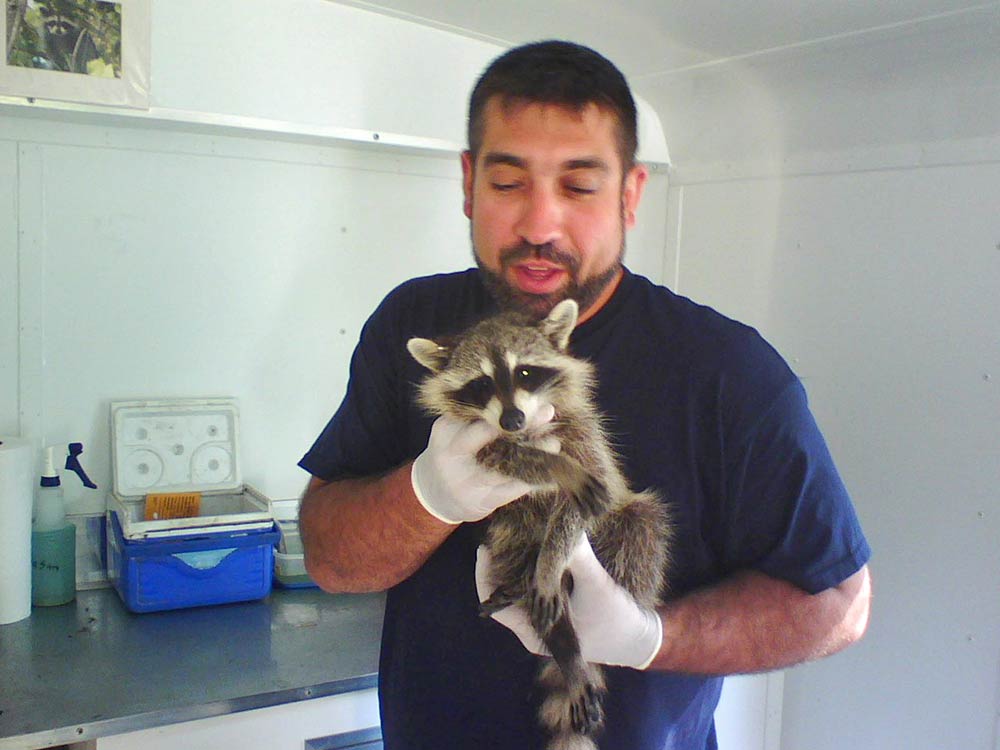
Web tags are small aluminum markers, similar to an ear tag used to track terrestrial critters like raccoons. The diminutive metal bands pierce the webbing on a chick’s foot, and are secured by folding the metal back over itself. Biologists use these to mark hatchlings that are too small to be banded, and in some cases, biologists have been able to apply one to a chick still in the egg. Because the birds are so small when web tags are applied, a metal federal band around its leg isn’t required, so pay close attention to the birds you harvest.
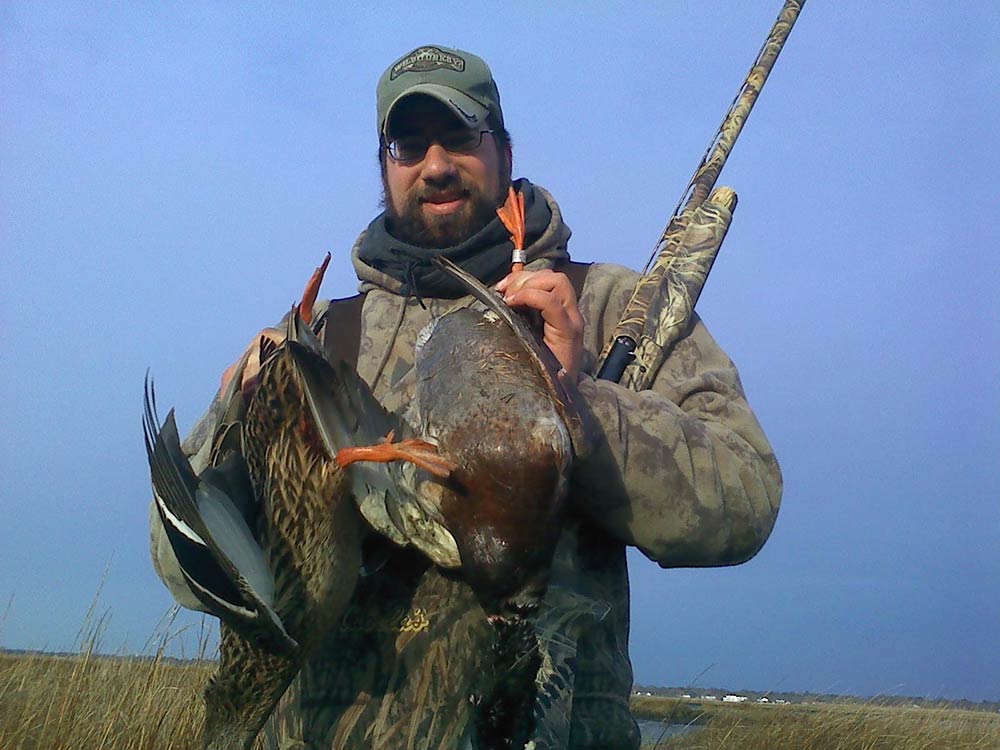
3. Recovered Bands are Rare
The BBL has over 64 million banding records on file. Only about 4 million of those 64 million bands have found their way into people’s hands again, and been reported back to the BBL. Averages from over the last decade indicate about 1.2 million birds are banded each year, but only about 87,000 bands are recovered annually. Overall, band recovery rates are only about six percent for waterfowl, and even less for non-game species—likely around 0.5 percent for songbirds.
Because band recovery rates are so low, reward bands were created to entice hunters to phone and report when and where they harvested a banded bird. Returns doubled in the mid-1990s after the BBL established a toll-free number and hunters no longer needed to write a letter to report a retrieved band. These days, reporting a band is even easier. You can fill out a form on your smartphone and receive data on the bird almost instantly.
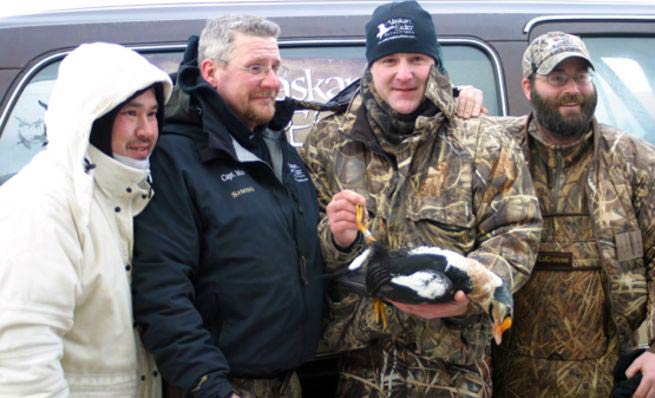
2. You Can Band Birds Before they Hatch
Sea ducks sometimes inhabit hard-to-reach portions of our globe, and spend months at a time at sea, making it notoriously difficult to capture or observe birds. As a result, researchers band king eiders before they even hatch. At the end of the 22- to 24-day incubation period, the chick will begin to pip, or break through the shell. When the egg initially breaks, the outside air causes the membrane to separate from the chick, and it’s safer for the shell to continue cracking.
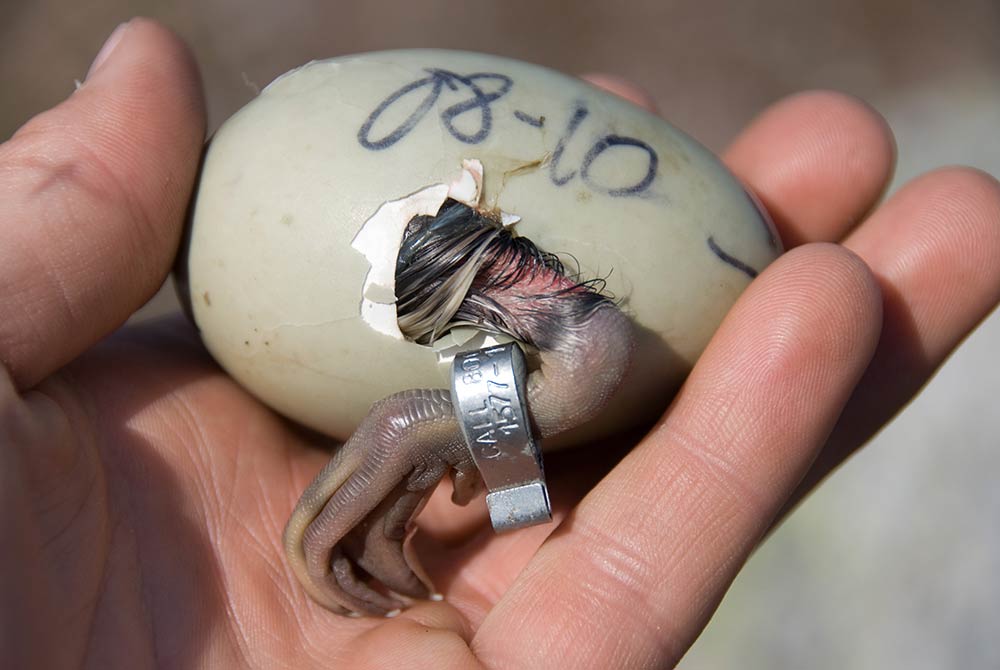
At this time, biologists use tweezers to gently punch a hole in the egg, and gingerly pull a leg out of the shell. Once exposed, the biologist will slip an oversized oval-shaped band over it. The space between the band and the leg is filled with plasticine clay, which gradually wears away as the duck grows, but keeps the band in place until the leg is large enough to do so on its own.
For more information on the world’s toughest ducks, visit the Sea Duck Joint Venture.
1. Bands Help Monitor Waterfowl Populations
Populations of wild animals are exceptionally difficult to count, even with aerial surveys and the like. As a workaround, waterfowl biologists capture and band a given number of individual birds, then release them into the wild. During the following year’s banding effort, another portion of the population is captured for banding, and the number of individuals already banded within the sample is noted.
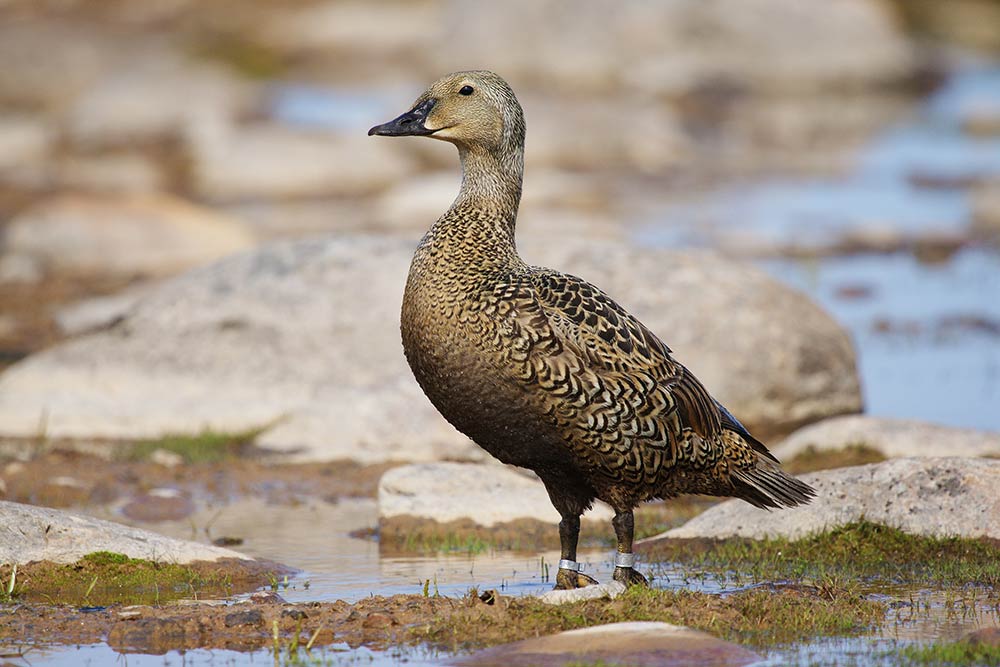
Because the number of banded individuals captured in the second effort should be proportional to the number of marked individuals in the whole population, biologists can create an estimate of the total population size by dividing the number of marked individuals by the proportion of marked individuals in the second sample. In simple terms, if you band 1,000 ducks one year and capture 1,000 ducks a year later, and you only encounter one band, you can assume the population of that type of duck is around 100,000 individuals.
If you or your hunting friends are lucky enough to harvest a banded bird, it’s imperative that you report report it; with such a small sample size, every band recovered is important. The more data available to managers, the better they can make decisions that will keep waterfowl populations healthy, and maybe even increase the bag limit is some regions.
